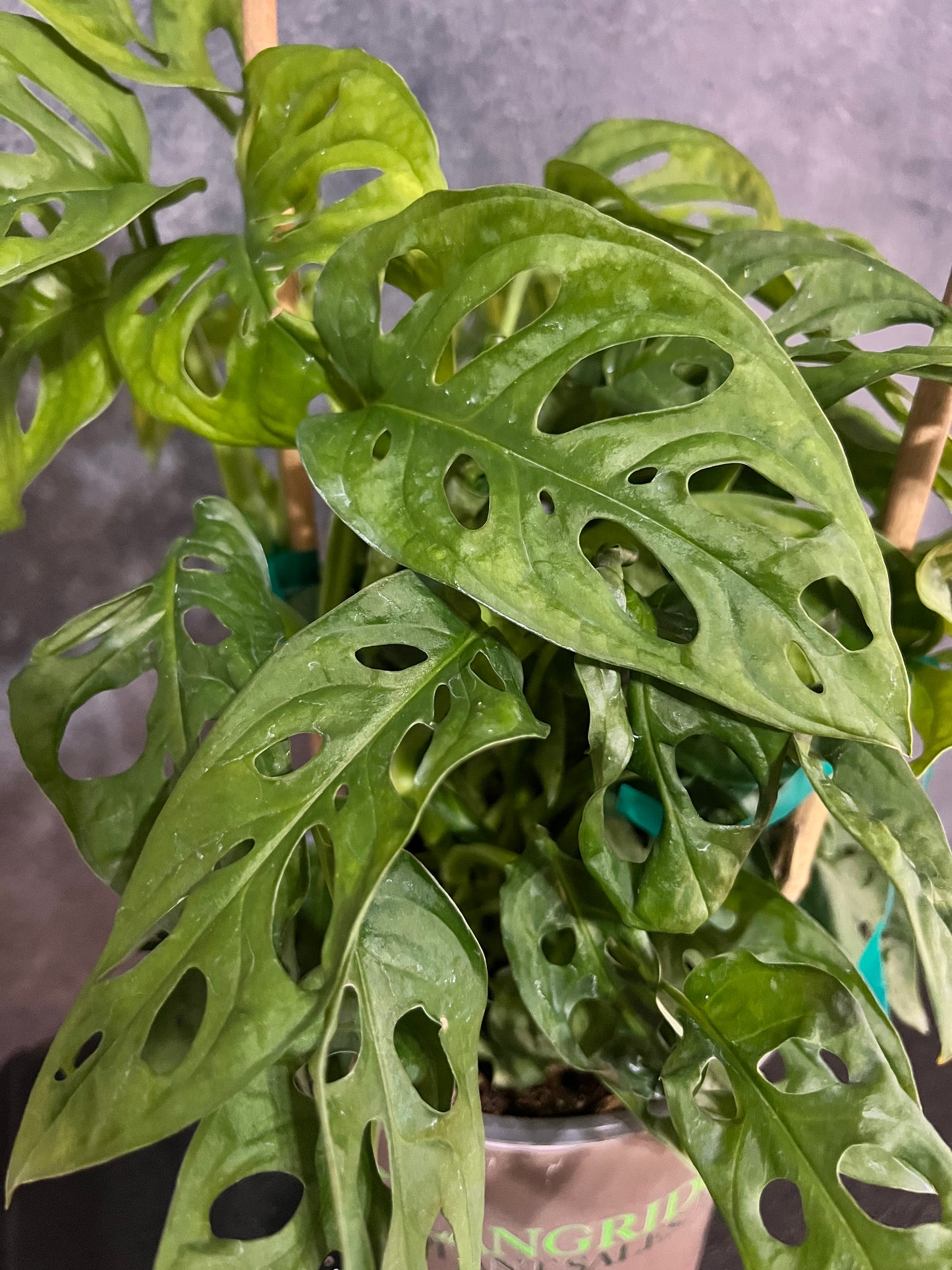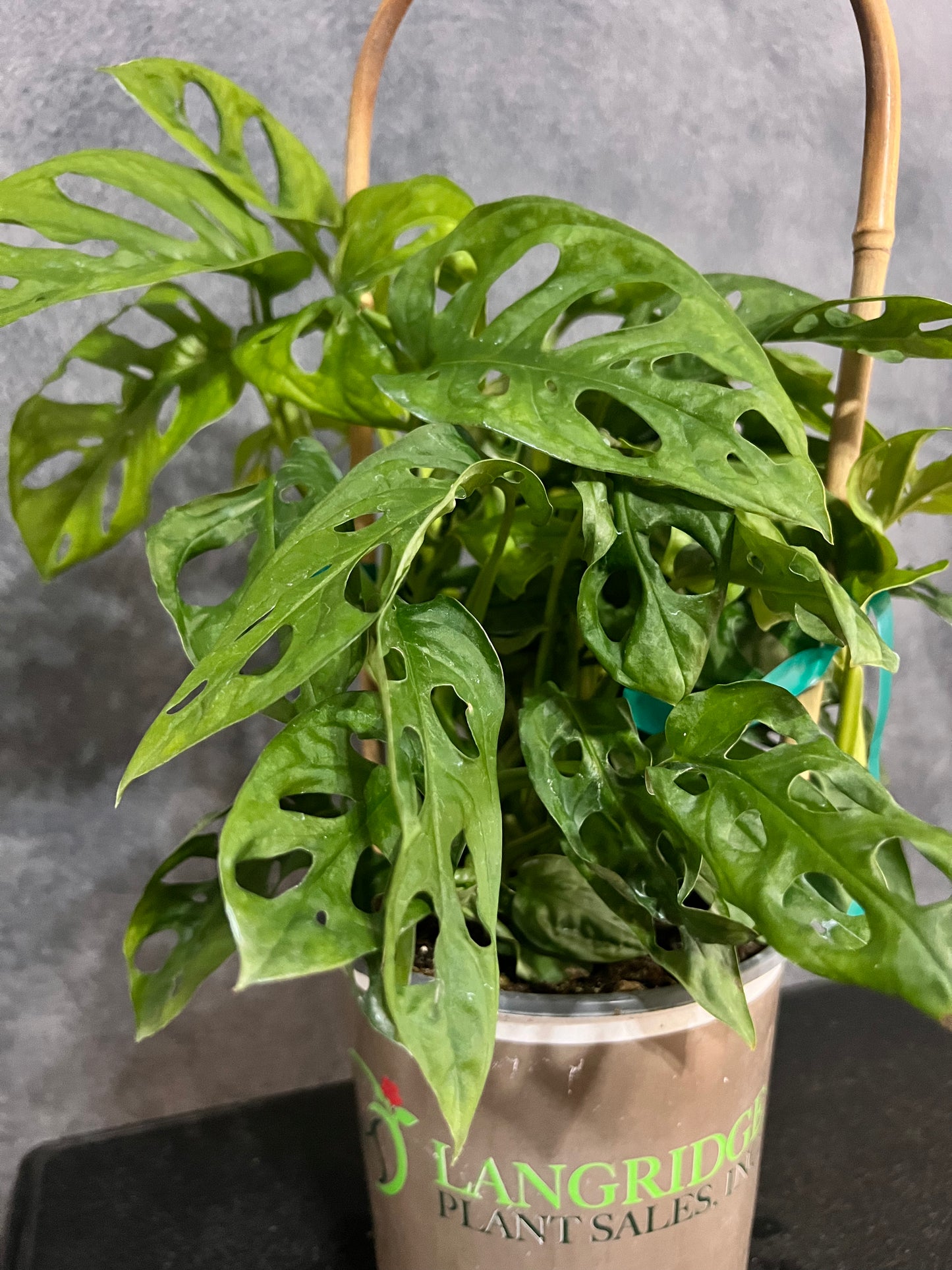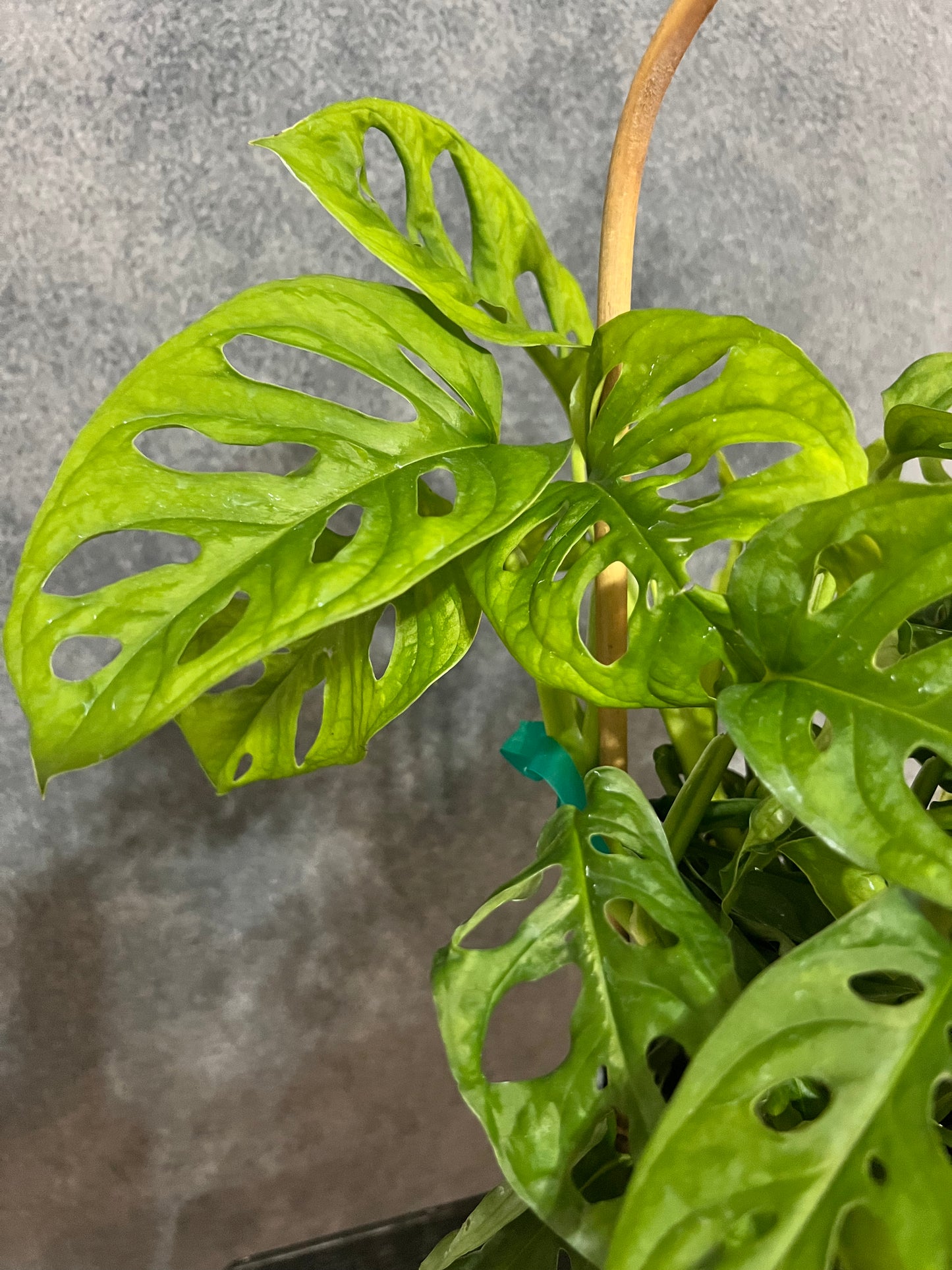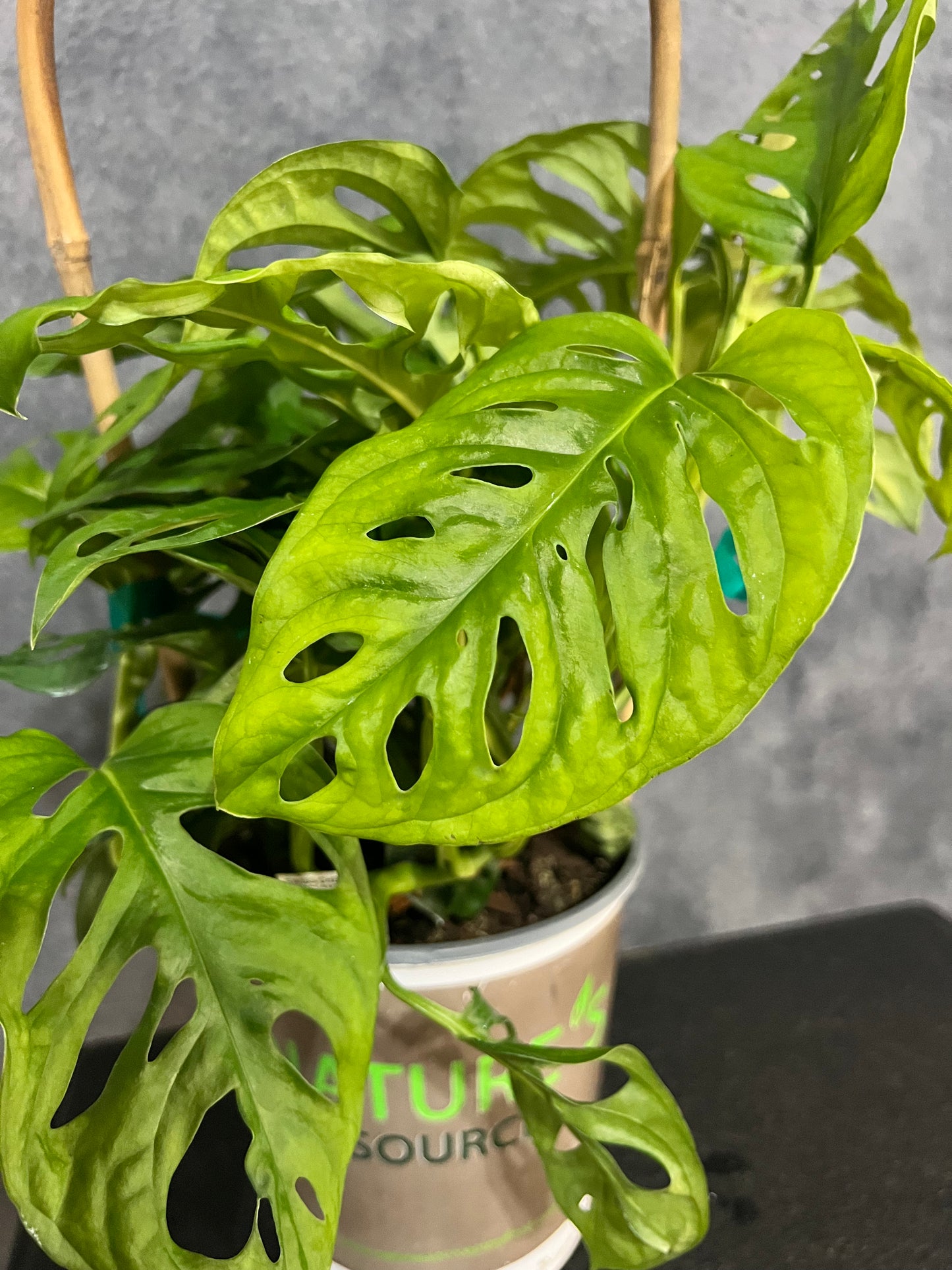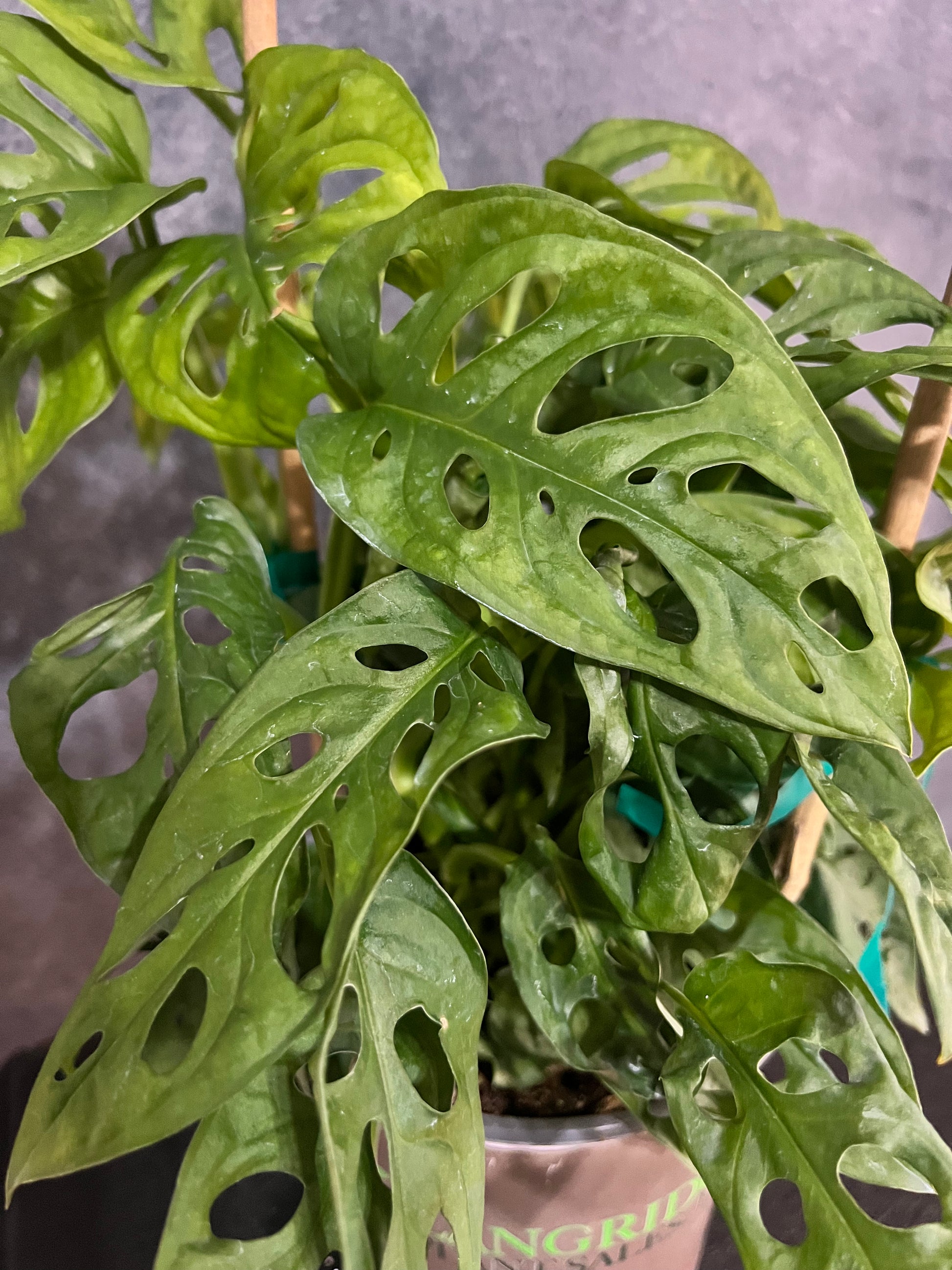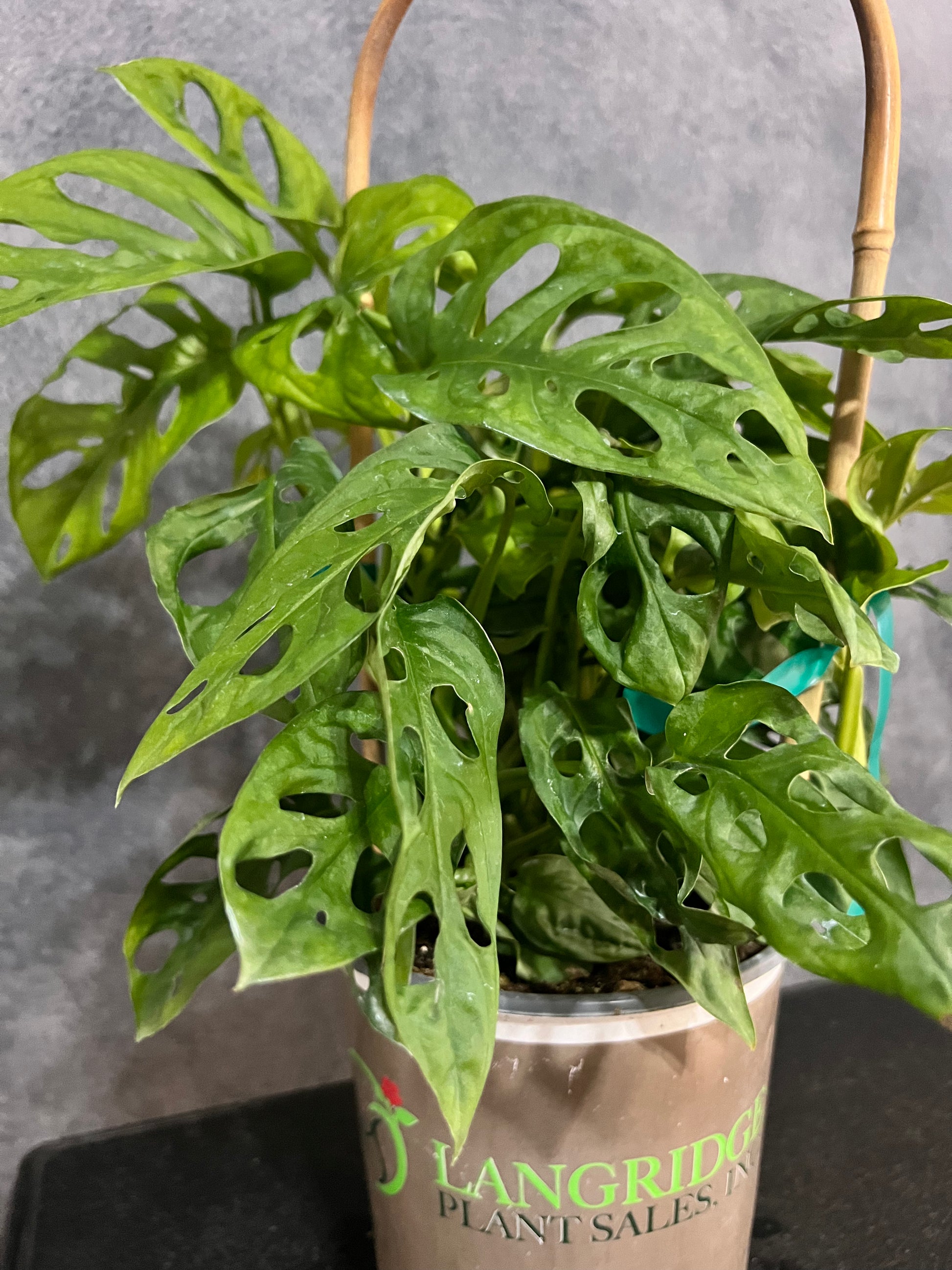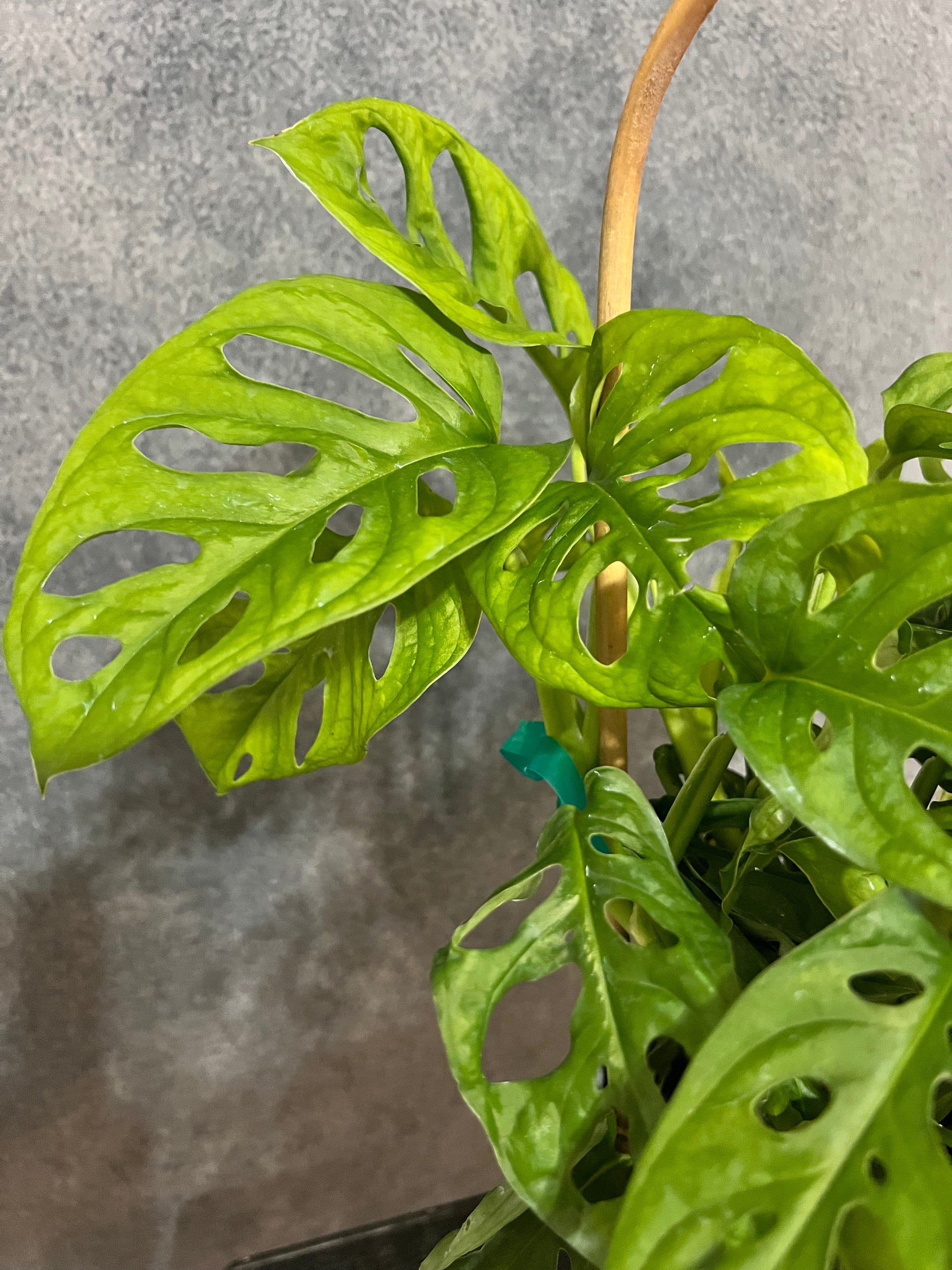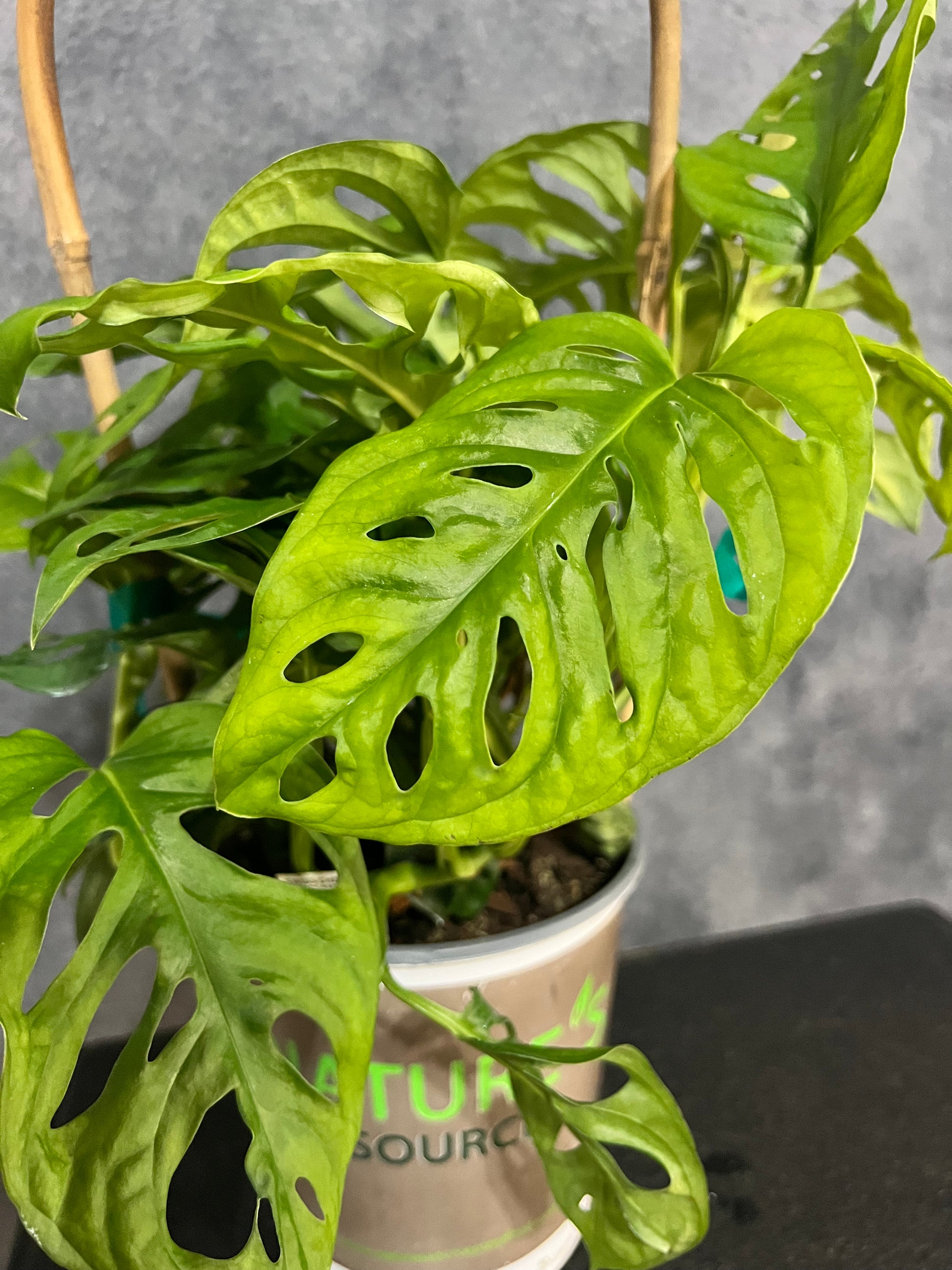Monstera Swiss Cheese Vine
Monstera Swiss Cheese Vine
The Monstera Swiss Cheese Vine, scientifically known as Monstera adansonii, is a popular houseplant known for its distinctive, perforated leaves. The foliage is heart-shaped, glossy, and dark green, with natural holes that develop as the plant matures, giving it the "Swiss cheese" appearance. This tropical plant is a climber and can either trail or climb, making it versatile for various indoor displays.
Grow Zone:
Monstera adansonii thrives in USDA hardiness zones 10-12. It is typically grown as a houseplant in cooler climates.
Height and Width:
When grown indoors, the Monstera Swiss Cheese Vine can reach a height of 3-6 feet, depending on support and conditions. The plant's width can vary but typically stays within 1-3 feet. Outdoors, in ideal conditions, it can grow larger, spreading over 10 feet.
Uses:
- Indoor Plant: Ideal as a decorative indoor plant, especially in hanging baskets, on shelves, or climbing up a trellis or moss pole.
- Air Purification: Known for its ability to purify the air by removing toxins.
- Ornamental Value: Adds a tropical vibe to homes and offices with its unique, holey leaves.
Native Range:
Monstera adansonii is native to the tropical rainforests of Central and South America, particularly found in countries like Mexico, Honduras, and Panama. It naturally grows in the understory of the rainforest, climbing trees to reach light.
How to Grow Monstera Swiss Cheese Vine
1. Light:
- Prefers bright, indirect light. It can tolerate lower light conditions but will grow slower and may produce smaller leaves with fewer holes.
- Avoid direct sunlight, which can scorch the leaves.
2. Watering:
- Keep the soil consistently moist but not waterlogged. Water when the top inch of the soil feels dry.
- Reduce watering in winter when growth slows down.
3. Soil:
- Use well-draining potting soil with a mix of peat, perlite, and orchid bark to mimic the plant's natural environment.
4. Temperature:
- Thrives in temperatures between 65-85°F (18-29°C).
- Avoid exposure to temperatures below 50°F (10°C).
5. Humidity:
- Prefers high humidity. Increase humidity levels by misting the leaves, using a humidifier, or placing the pot on a pebble tray with water.
6. Fertilizing:
- Feed with a balanced, water-soluble fertilizer every 4-6 weeks during the growing season (spring and summer).
- Reduce or stop feeding during the fall and winter months.
7. Pruning and Training:
- Prune to control size and shape. Cut back any leggy growth to encourage fuller, bushier growth.
- Train the vine to climb a support structure, or let it trail for a cascading effect.
8. Pests and Problems:
- Watch for pests like spider mites, aphids, and mealybugs. Treat infestations with insecticidal soap or neem oil.
- Overwatering can lead to root rot, so ensure the soil drains well and the plant is not left sitting in water.
---SHIPPING NOTICE PLEASE READ BEFORE PURCHASING LIVE PLANTS!---
We WILL NOT refund the purchase of or the shipping cost of live plants purchased with the intent to be shipped to states that do not authorize importing live plants or to states with restrictions! Purchases to these states will be held for 30 days for pick-up at our Slidell, Louisiana store and the shipping cost associated with these purchases will be held for the care of the plant while waiting to be picked up. All sales are final. If the plant(s) purchased are not picked up within 30 days from the date of order, these items will be returned to our sales inventory and you WILL NOT be refunded. Thank you for understanding these policies.
Due to regulations, certain states have restrictions on importing plants. Please review the list below to ensure you're not attempting to order any restricted plants in your area.
**Important Note:** We do not ship any plants outside the U.S.
State-Specific Restrictions - We ARE NOT responsible for any plant(s) that are not listed in these restrictions. Purchaser bears all responsibility for making sure the plant(s) they desire to purchase are not banned from being imported to the shipping state:
Arizona: Juglans spp.
California: Castanea spp., Juglans spp., Pinus spp., Quercus spp.
Colorado: Some counties restrict Prunus spp. Please verify your local county regulations.
Florida: Castanea spp., Cornus spp., Quercus spp., Cornus mas
Georgia: Vaccinium spp.
Hawaii: Pinus spp.
Idaho: Humulus lupulus, Mentha spp., Vitis spp.
Indiana: Fragraria spp., Rosa spp.
Kansas: Juglans spp.
Michigan: Abies spp., Vaccinium spp.
Montana: Pinus spp.
Nevada: Allium spp.
Mentha spp.
New Jersey: Rosa spp.
New York: Vitis spp.
Oregon: Allium spp., Castanea spp., Corylus spp., Humulus lupulus, Quercus spp., Sambucus nigra, Ulmus spp., Vaccinium spp., Vitis spp.
Texas: Juglans spp.
Washington: Allium spp., Castanea spp., Corylus spp., Humulus lupulus, Vaccinium spp., Vitis spp.
Wisconsin: Abies spp., Pinus spp., Picea spp., Mentha spp.
Additionally, we cannot ship plants in soil medium to the following states: AK, AL, AR, AZ, CA, HI, ID, KS, MS, MT, ND, NM, NV, OK, OR, SD, TX, UT, WA.
Couldn't load pickup availability
